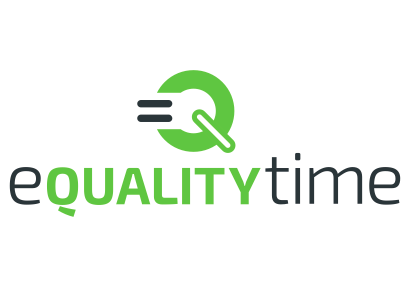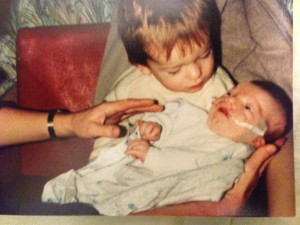
Following on from the interview we did recently with Paraclimbing World Champion Fran Brown, which was very well received, we interview David Niemeijer, who is the Founder and CEO of AssistiveWare, makers of the famous Proloquo2Go.
AssistiveWare were very much at the vanguard of the tablet revolution in AAC that I keep banging on about, and they remain the go-to solution for Tablet AAC (It’s the approach my little brother uses as it happens, and that’s quite the accolade). I feel very lucky that I got to ask David the questions I did, particularly given how illuminating his answers were. Well worth reading.
(If you are interested in other AAC-related articles on the blog, it’s worth looking at the listing here)
Me: Proloquo2Go has an absolutely dominant position in the AAC app marketplace, despite or perhaps because of, the much higher cost of the app. Do you think that your pricing strategy has been key to your success?
David: In 2009 when we first presented Proloquo2Go at a conference in the US a few weeks before release, we demoed the app and asked people what they thought it should cost. Around US$ 2,000 was the first figure people mentioned. When we said it would be lower they descended to US$ 1,200. The lowest people could imagine was US$ 600. When we announced that the price would be around US$200 people told us we were crazy (at present Proloquo2Go costs £150 including VAT). People said that it was simply not possible to sell at such a low price. Dedicated dynamic display devices ranged in cost from US$2,000 to over US$12,000 at that time. What we aimed for was that an iPod touch (the iPad didn’t even exist at that time) with Proloquo2Go and a speaker case would cost less than US$500. We wanted to provide access to high-end AAC to all the people who did not get funding and who could not afford buying a solution costing several thousands of dollars out of pocket.
At the same time we knew that the AAC market is quite small and that we had to pick a price that would be high enough to be able to continue to invest in further development of the app and cover the costs of providing good support. We are now in our 5th year of free updates and have five team members providing 24/7 email support with a typical response time of a few hours. This would never have been possible had we priced the app lower. What is interesting is that we demonstrated that apps did not have to cost a few dollars to be successful and this has allowed other AAC apps to be priced higher too, which is a good thing as otherwise there would have been far fewer AAC apps and most would have never gotten updated and improved over time. Note that by no means we are the most expensive AAC app. There are several more recent, AAC apps that cost significantly more than Proloquo2Go.
So I think our pricing strategy has allowed us to continue innovating, investing in developing new features, in creating the first-ever genuine children’s Text to Speech voices (the British Harry and Rosie voices) and pushing the app and the AAC field forward. However, the success of the app is not in the price, but in the fact that we continue to improve and enhance the app, that we invest a lot in quality (we have four people doing full-time software testing) and that we put a lot of effort in providing good learning resources (manuals, PDF tutorials, e-learning videos) and top-notch support. Later this year we will release Proloquo2Go 4, another free update, which will be bringing some exciting innovations.
But the true success of our strategy has been that we have been able to make high-tech AAC more affordable and more user friendly, bringing AAC to two to three times more people every year than was the case when there were only dedicated devices. For example, there are now so many kids with autism that have access to high-tech AAC while in the past it was mainly kids with significant physical impairments. Similarly, we find that kids get access to this kind of technology at a much younger age now, often allowing them to enter mainstream education where in the past they would have been in special schools simply because they had no way to effectively communicate. We know that access to communication leads to behavioral, educational and other benefits. Being in a position to contribute to those benefits is very fulfilling.
Me: At the Communication Matters conference this year I chatted to one of your coders, and to my pleasant surprise he really was a coder (one of my bugbears about the state of the AAC industry is that I keep meeting salespeople who fake technical knowledge to vulnerable people in order to sell an expensive bit of kit) and we had a nice chat about memory management and lazy evaluation. Do you have a distinct policy of making sure that customers meet coders regularly or is it a useful consequence of having a relatively small and agile team?
David: Actually, all but one person in our product design team is also an experienced developer. For example, I did all the development work on Proloquo2Go myself until mid-2011, when as a CEO of a growing company I no longer had the time for it. These days we have a design team where we combine assistive technology expertise, AAC expertise, interaction design expertise, and IT expertise. We design new features and enhancements as a team. Through several iterations we refine the designs so that we do not simply bolt on new features, but integrate them into the products while at the same time enhancing ease of use. As a rule of thumb we spend just as much time looking for ways to simplify and streamline the user interface as on designing new features.
In order to do a good job it is vital that everyone in the company is exposed to the AAC users, families, therapists and educators that use our software. So it is indeed our policy to create opportunities for everyone to go to conferences, visit schools, and meet users. Additionally, we develop and discuss case studies (often in video form), make sure that those attending a conference get to go to sessions, etc. We also ask our support team to share interesting cases as well as feature requests with those team members involved in product design.
That said, costs of conferences and travel are high so we cannot create as much interaction as we would like, but we do what we can. For example, after Communication Matters we went to visit an AAC center and a special needs school. I personally consider such interaction vital to get inspiration, to get motivation and to better understand the realities in the field.
Regarding sales people, we actually do not have any sales people. The team members going most frequently to conferences are those involved in product design, support and training.
Me: Many of the more established AAC manufacturers point to having control of the hardware as being an argument for being able to claim advantages to tablet based solutions in terms of touchscreen responsiveness, robustness or speaker volume. Do you guys ever feel limited by the nature of your platform?
David: Of course no platform is ideal. Speaker volume is probably the most limiting aspect of using an iPad for AAC. But there are robust speaker cases that can resolve that. Access is another issue, but Apple is working very hard to improve access options. With iOS 7 they introduced the first iteration of Switch Control and perhaps one day there will be head and eye tracking too. In the mean time, those are areas where traditional devices excel.
On the positive side, iPads are affordable, mainstream and do not make the user stand out. They are also multipurpose and there is a huge number of apps available covering the entire spectrum from fun to serious. We have found that in many cases iPads tend to get much more use than traditional dedicated devices that often gather dust because they are considered too heavy, cumbersome or expensive to use all the time.
So every platform has its pros and cons. We do not feel the need to conquer the world by being on every single platform or device. We prefer to do the best possible job on one platform rather than a mediocre one just to be also on Android and Windows. Other companies serve those operating systems or create dedicated devices providing good solutions for people who do not want to use or cannot use an iOS device. So people have plenty of choice, even if we stick to iOS.
Me: One of the advantages of app-based AAC companies is the ability to quickly release improvements to your users by changing the version on the app store and asking them to update. Can you give me an example of a user suggestion that you implemented, and perhaps give me an idea of how long it look before it was available to users?
David: I would argue that all our features are derived from user feedback (and, very importantly, observing users using our software). Some features are direct translations of user feedback, but in many cases the best features are inspired by latent needs users have that they cannot describe or imagine could be addressed. Most users are not software or interaction designers. They do not know what is technically feasible, they are not aware of the bigger picture (the needs of other users or those working with users). So it is our task to take all the individual requests and our own observations and establish the bigger picture and based on that look for innovative ways to move things forward.
I think it is not entirely true that because we do software (and not hardware) we can do quick releases. We need to be careful not to just bolt individual new features on, but integrate them as consistent sets of features. We also need to update manuals, tutorials, e-learning videos and, very important, have our team of testers thoroughly test after any changes (however trivial). We used to do quite a few minor updates adding a number of new features with each update and we have found that this actually significantly slowed down the development of the major updates because of even small changes can lead to bugs that need to be found (testing), fixed (developing), verified fixed (testing) in addition to updating all documentation. So we are now focusing on fewer, larger updates.
All this said, there are times where there is a clear one-on-one relation between feature requests and updates. For example, we released Proloquo4Text, our text-based AAC app in November last year. The response has been overwhelmingly positive but several people remarked that they found the icon of the play button and some of the other buttons a bit small. We had designed them in standard iOS 7 style. We have now reworked them to be larger and increased the line thickness to better serve both users with visual impairments and those with limited fine motor control. This will be part of Proloquo4Text 1.1 at the end of this month. In that same update we are also adding a feature that was not requested by any Proloquo4Text user, but that we know some people will find useful, because we received some requests for it for Proloquo2Go (and yes, in the future we will add it to Proloquo2Go too), which is support for selecting suggestions from the word prediction using keys on an external Bluetooth keyboard. So one feature is a more or less direct translation of user feedback on Proloquo4text while the other feature is based on our knowledge of wider needs that have not yet been expressed by any Proloquo4Text user.
Me: So as the very visible (at least compared to other AAC companies) CEO of the youngest major supplier of AAC software, how do you think the AAC market will change over the next five years?
David: I would expect:
- A further emphasis on AAC on consumer devices.
- A greater emphasis on user interface design and ease of use
- Growing support for users with significant physical impairments in consumer devices
- Consolidation in the AAC app market, which is now flooded with lots of very small app companies that price their apps too low to support continued development
- Further consolidation in the dedicated device market.
- A strong growth in the number of high-tech AAC users as users migrate from low and mid-tech solutions to high-tech consumer device based solutions.
- Hopefully finally a growth in the number of AAC experts to support the growing user base
That last point I consider as today’s biggest challenge. Access to high-tech AAC is now more affordable than ever, but there are far too few therapists specialized in AAC to really help people get the most out of the apps they purchase. In that light, it’s worth reading our survey from March 2012.









